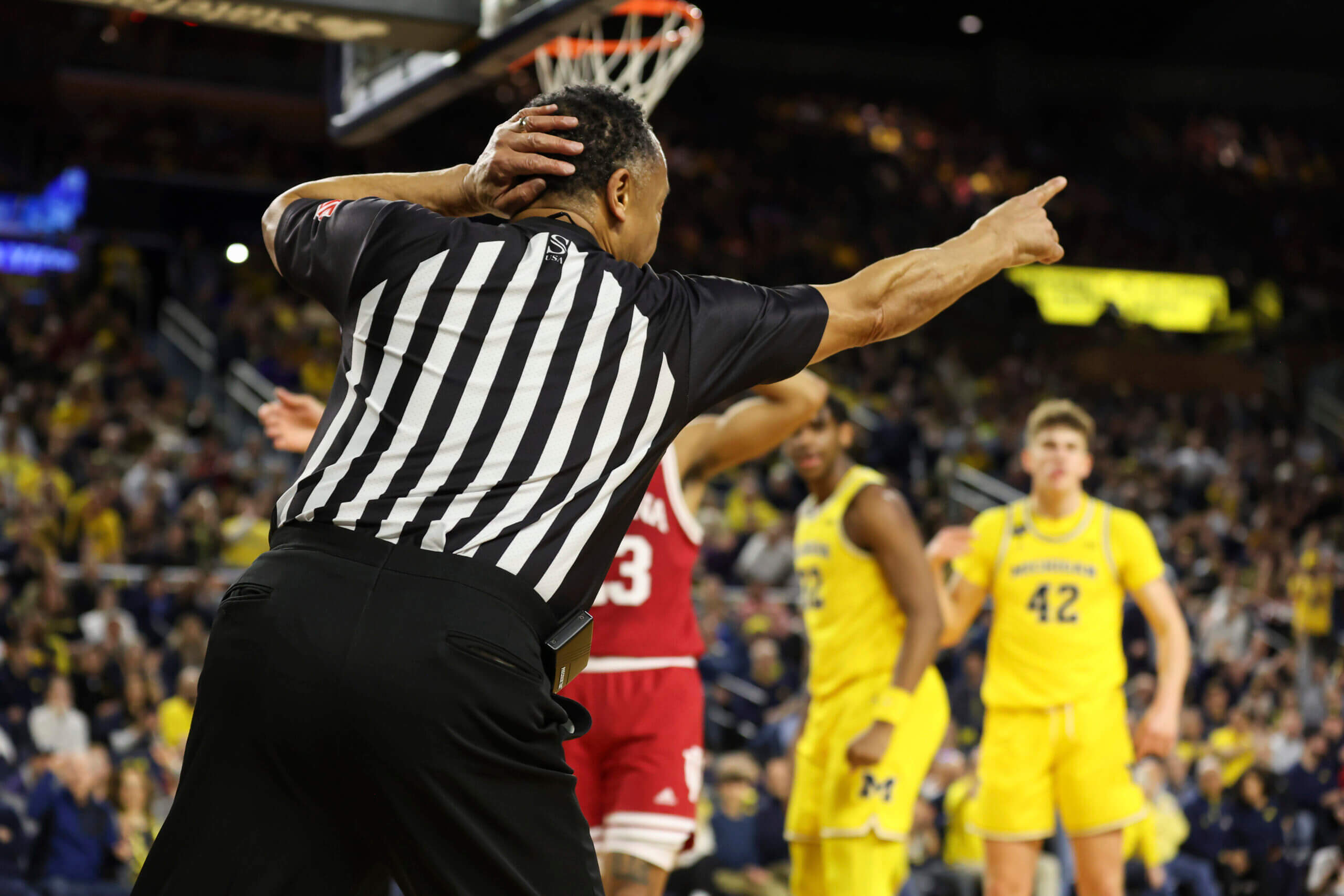Sports
Which men’s college basketball rule change would most improve the on-court product? – The Athletic

NCAAM
Major League Baseball introduced radical new rules before the 2023 season, including the pitch clock and banning the shift, in an effort to speed up the game and create more action. And you know what? It has been a smashing success. TV viewership and attendance have increased, and games are now nearly 30 minutes shorter on average, with less dead time.
Advertisement
That got us thinking about what college basketball could learn from this. There are some new rules coming to the sport in 2023-24, most notably the legal guarding position for defenders attempting to take a charge and reviews on goaltends. But most fans probably won’t even notice these alterations.
What if college basketball really wanted to tinker with its state of play? We gave our experts the following challenge: If you had unilateral power to make one major on-court rule change, what would it be and why?
Here are the responses:
Begone, ye (literal) foul beast! Ye cursed succubus of cheap weakside defense! Ye inscrutable archfiend of officiating crews! Ne’er may your ilk fill a hustle stat chart.
But seriously: The idea that a defender is rewarded for getting fallen upon needs to go. Forever. The offensive foul can’t be completely eradicated from the game, because no one wants to see ballhandlers set free to deliver forearm shivers as they navigate full-court pressure. So keep the evaluation as-is for fouls outside the lane. If a defender can beat a dribbler to a spot and establish legal guarding position, that sort of energy and footwork should be commended.
In the paint? No choice but to challenge the shot. Stand still with your arms up. Jump and maintain verticality. Try for a good old-fashioned swat into the fifth row. Whatever. You cannot, however, slide over and cross your arms and wait for an offensive player to collide with you and earn the whistle. Ever. Under any circumstances.
The gray area is post defense, of course, and whether this is essentially permitting your Zach Edeys and Armando Bacots to initiate contact without the threat of penalty. Well, they pretty much do that already, for one. And if they’re attempting to create that advantage, officials can then be instructed to give the defender a little leeway to hold his ground or simply ignore some semi-incidental contact on the shot. Referees don’t make every call exclusively by the book, every time, as it stands. This is no different.
Advertisement
Maybe outlawing in-lane charges results in more fouls, maybe it results in more free throws, maybe that slows the game to a lurch. I believe coaching staffs can drill players on how to stay vertical and avoid the foul, precluding all these issues. After all, they’d have plenty of extra time, since they wouldn’t have to teach the proper way to get trampled on anymore. — Brian Hamilton
How many times has this happened? Tight game coming down to the wire, and a defensive player fights like mad to disrupt a play, getting his hands around the ball and forcing a tie-up. Whistle blows. The guys in stripes look over the scorer’s table and give the ball to the offensive guy anyway — because the possession arrow worked in his favor.
Or better yet: Same scenario, and the defender lazily puts his hands on the ball merely to get the whistle because he knows the possession arrow works in his favor.
Just stop it. Please. The jump ball works in the NBA. Works in the WNBA. Ditto Euroleague. Yet in college hoops, Dr. Naismith’s method to start the very first basketball game is little more than a photo op.
The NCAA eliminated the jump ball largely because it favored taller players. Well, yes so does much of a sport when the object is to put a ball through a rim 10 feet off the ground. Admittedly, asking Zakai Zeigler to face Zach Edey seems like advantage, Purdue. Then again, asking Edey to guard Zeigler probably wouldn’t be fair, either and nobody is saying coaches shouldn’t stop scheming to get favorable switches.
The game has evolved. Everyone is more athletic. Little guys can jump. Big men can move.
It’s high time college hoops evolved with it. Get rid of the alternate possession arrow and bring back the jump ball. — Dana O’Neil
Ever wonder why, in the age of high-definition giant televisions, that college basketball officials review plays on a tiny screen? The NCAA can do better and move the game along faster with a new review system. Put an extra official in a room — it doesn’t have to be on-site — and give that official a giant HD TV with access to every camera in the building. Put that official in charge of reviews.
Advertisement
The other officials will wear a beeper and a Bluetooth earbud so that the review official can communicate with the crew when necessary. Only the review official can decide if there needs to be a review. This should speed up the review process and take away any sort of bias an on-the-floor official might have. — CJ Moore
What’s the rush, right? That has basically been college basketball’s approach to speeding up pace of play for its entire existence. The game didn’t have a shot clock at all until 1985, and even then, it was a generous 45 seconds. In 1993, we got it down to 35 seconds. When offenses were bogging down at historically abysmal rates by 2015, the current 30-second shot clock was born. And it has helped! The national scoring average was in the 60s for years before that tweak and it’s hovered in the low 70s since.
The question is: Why stop there? The NBA, FIBA, every kind of professional basketball league uses a 24-second shot clock. It helps scoring and makes the game more exciting. College basketball should do every last thing it can right now to make the game more exciting.
I’m not naive enough to believe there won’t be some ugly growing pains whenever that day comes (and I believe at some point it will), but players and coaches will adjust. They do every other summer when college players join their national teams for the U19 FIBA World Cup, which the United States has won five times since 2009.
Just look at Kentucky this summer at the FIBA-sanctioned GLOBL Jam in Canada, where a John Calipari-coached team averaged 91.8 points and attempted 117 3-pointers in four games. Historically speaking, that free-wheeling style the Wildcats played there is way outside Calipari’s comfort zone. But a 24-second shot clock, at least in part, helped nudge him into a new approach. And it was a ton of fun to watch. More, please. — Kyle Tucker
The men’s college game is the only level of basketball on the planet that plays two halves instead of four quarters. Why? Because some coaches decided in 1954 that they didn’t like 10-minute quarters … and apparently inertia has ruled ever since. I’ve mostly been ambivalent about halves vs. quarters, but watching FIBA and the women’s game has convinced me that quarters make the game flow better.
The most obvious benefit, besides the potential for two more buzzer-beaters, is the foul situation. I dread games when a team gets into the double bonus with 10 minutes left in a half, guaranteeing an endless parade to the free-throw line the rest of the way. With quarters, teams would get two free throws after the opponent’s fifth team foul, but that resets after each period. A four-quarter game would also mean one fewer media timeout; broadcasters won’t like that, but giving them an extra minute or two of ads between quarters is better than the catastrophe of a media timeout followed immediately by a coach’s timeout we get too often now.
Advertisement
If the four-quarter system is good enough for the NBA, FIBA, EuroLeague, the WNBA, college women, high school and youth leagues, then maybe, just maybe, it’s good enough for men’s college basketball too. — Brian Bennett
(Top photo of a charge call in last season’s Indiana–Michigan game: Scott W. Grau / AP)
Subscribe to The Athletic for in-depth coverage of your favorite players, teams, leagues and clubs. Try a week on us.









